Australia So Much to See
South Western Queensland from Warry Gate to Eromanga
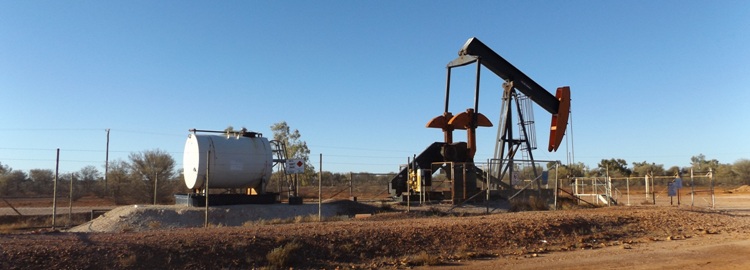
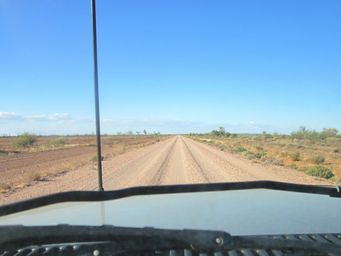
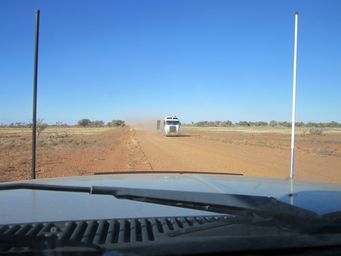
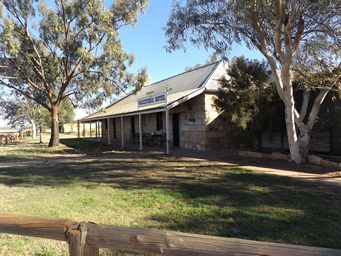
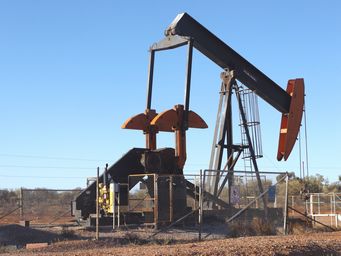
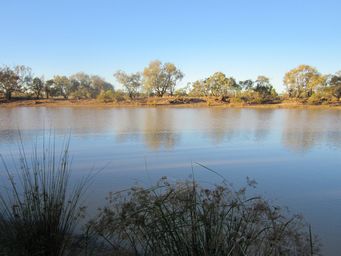
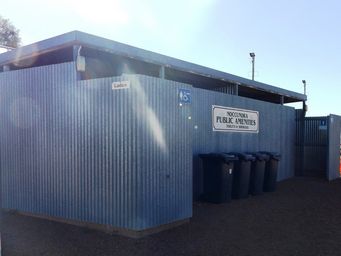
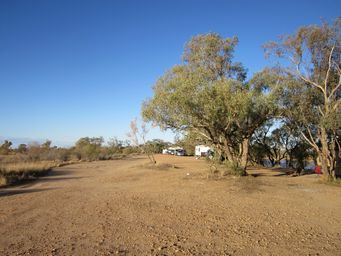
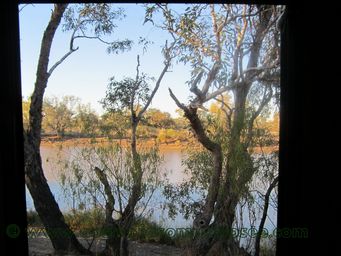
Heading north on the Warry Gate Road, we travelled towards Noccundra through cattle stations on a good unsealed road.
From the hall, it is about 400 metres along a track to the large Noccundra Waterhole on the Wilson River, where unserviced free camping
is permitted along much of the two to three kilometres length of this permanent pool. There is plenty of room along the edge
of this long pool for all to have a water view. The pool is suitable for boating and fishing.
Continuing towards Noccundra, we met a single lane strip of road seal twelve kilometres before reaching the Noccundra Hotel. There is a racecourse three or four kilometres south of the ‘town’. The town consist of little more than the small heritage
listed stone hotel dating back to the 1880s, and alongside a corrugated iron hall with toilets and basic showers attached, and tennis
courts. The town population is listed as two or three. Fuel is available from the hotel (pumps at rear).
The single lane seal continues on the Warry Gate Road for twenty kilometres until it terminates at the Bundeena Road that links
Eromanga and Thargomindah.
Through parts of the Cooper-Eromanga Basin, there were pumpjacks, called Oil Donkeys here, indicating oil wells dotted over
the landscape.
The Cooper-Eromanga Basin encompasses the north east corner of South Australia including the rich Moomba gas fields, and is mostly in adjacent Queensland. It is part of the Eromanga Basin, the former Eromanga Sea which covered around a million square kilometres a hundred million years ago. The towns of Eromanga and Windorah are within this fossil and fossil fuel rich area. See Cooper and Eromanga Basins.
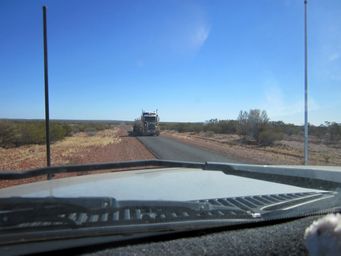
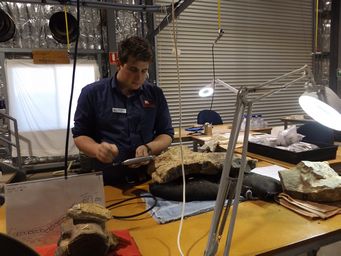
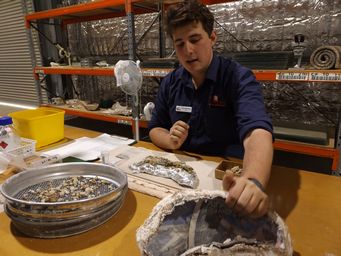
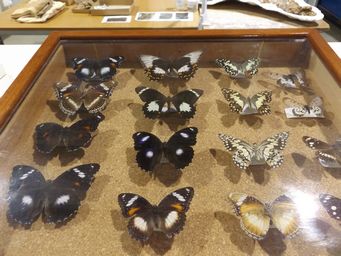
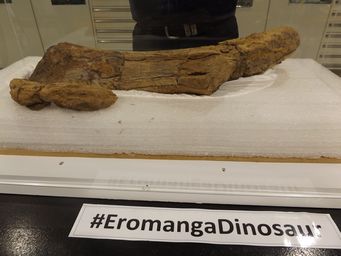
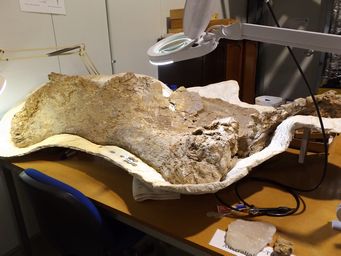
The small town of Eromanga is in an area rich with fossils from the dinosaur era, with the largest of the dinosaurs ever found in
Australia being found here, at Eromanga.
The two main areas in Australia where dinosaur fossilised bones are being discovered
are Winton and Eromanga, towards the north and the south of the former Eromanga sea.
The massive dinosaur, nicknamed Cooper,
was discovered on the outskirts of Eromanga, in 2007. Cooper, who is thought to have lived around 95 - 98 million year ago,
will go on display with at least four other similar Titanosaurs including George, Sid, Zac, and Tom. Cooper is estimated to
have been thirty metres long, and bones discovered from George have indicated he was as big or even bigger than Cooper.
Following
discoveries of large dinosaur bones by the Mackenzie family on their pastoral station, the not for profit Outback Gondwana Foundation
was set up, and funds were raised from grants and sponsorships to build the Eromanga Natural History Museum which includes climate
controlled storage for fossil storage. This facility three kilometres from the town along airport road was opened in 2016, so we were
lucky to visit this new feature. At this site, discoveries from Eromanga and Eulo are being progressively worked on. Megafauna
fossils from Eulo are estimated to be between 50 and 100 thousand years old.
Tours and talks at the Natural History
Museum are informative, as palaeontologists continue working on the bones discovered. In addition to these tours, other tours
can be taken to observe digging operations in the field.
More than just dinosaurs, back in the townsite the Eromanga Living History Centre is an unmanned museum with videos and historic photos
covering the early pastoral history, opal mining and oil exploration, as well as the more recent dinosaur fossil discoveries. To access, obtain a key from the Eromanga Royal Hotel. This hotel dates back to 1885 and was once a Cobb and Co staging post.
Australia's largest inland oil refinery, owned and run by IOR, is located in Eromanga. IOR is a locally owned company
which provides diesel on petroleum to outlets across much of inland Queensland and New South Wales, with some outlets in other mainland
states as well.
Our host palaeontologist Corey shows us the work he is doing on recovering fossilised parts of Cooper (at left).
Corey
shows us another large bone fragment (below).
A femur from the largest Australian dinosaur discovered so far, nicknamed Cooper (at left).
Sifting bone fragments from surrounding rock, and creating casts of compiled bones (at right).